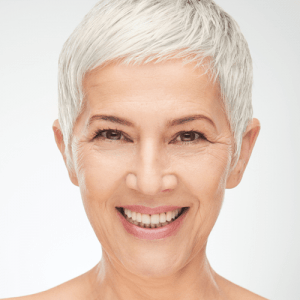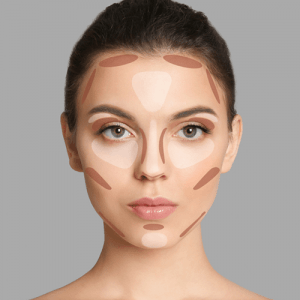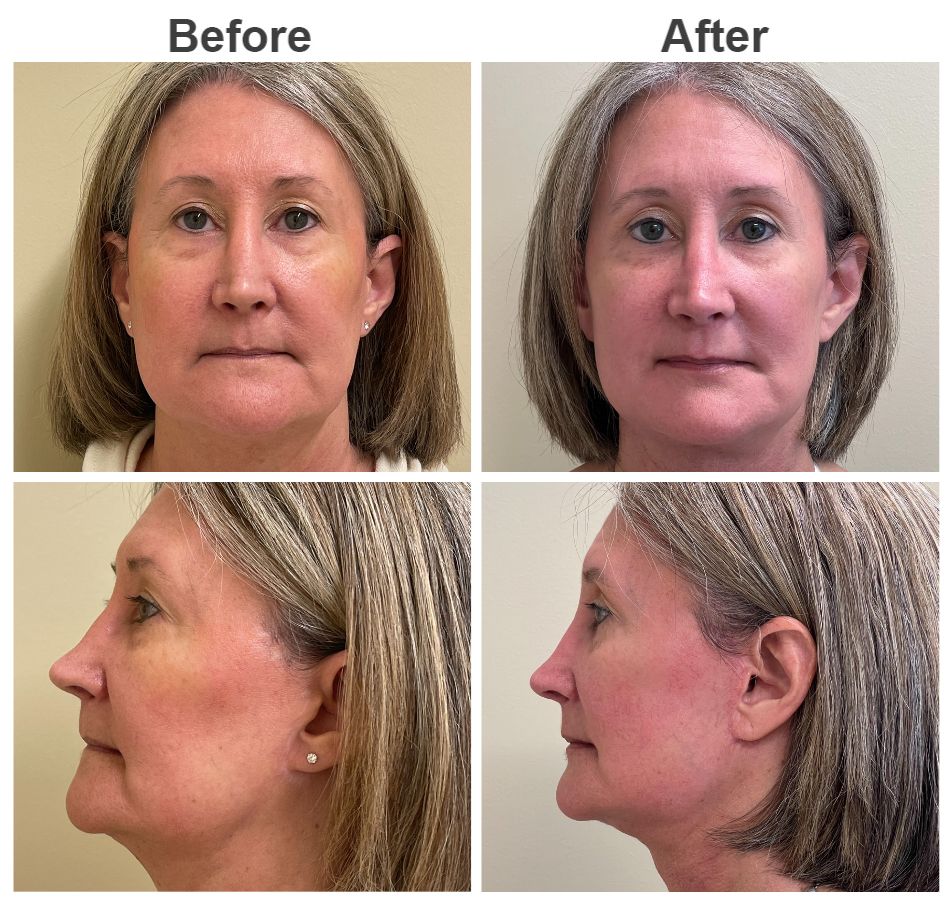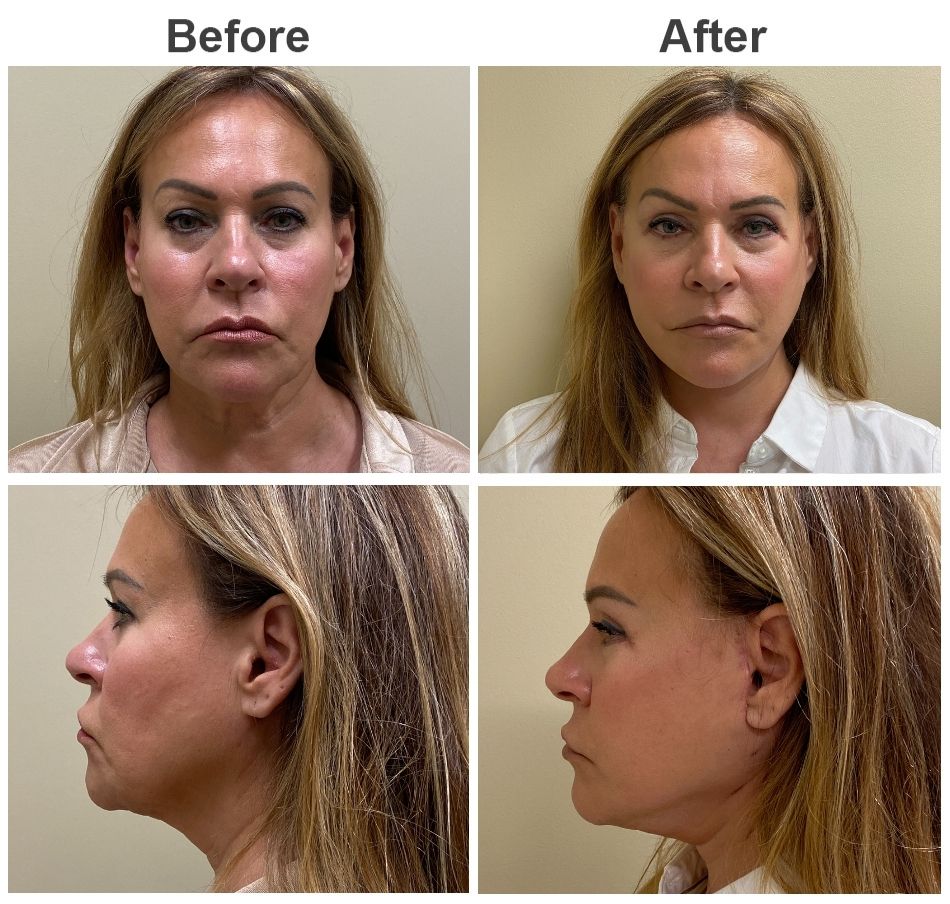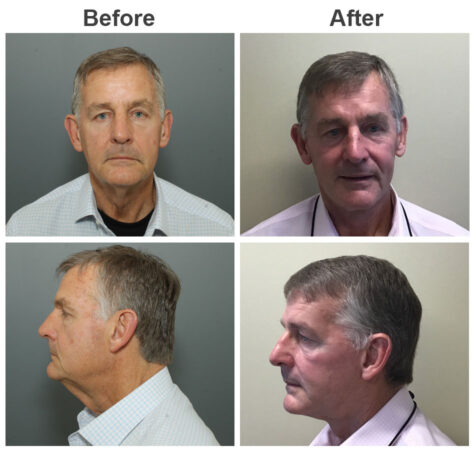Facelift
A facelift is also known by the medical term rhytidectomy. A facelift is a cosmetic surgical procedure performed with the intent to improve the visible signs of aging on the face and neck. The facelift procedure repositions and tightens the muscles and excess skin on the face and neck. Patients may also choose to include other surgical procedures as part of the facelift, including eyelid and brow lift surgery.
When is the Best Time in Life to Have a Facelift?
I have performed facelifts on patients in their early 40’s to late 70’s. That is to say, the best time to do the operation is when you feel you need it. It is the responsibility of the surgeon to explain everything involved to achieve a particular result-risks, convalescence, biologic and financial costs. The patient must decide whether the costs are worth the benefits. Younger patients do get better results because their skin tends to be in better condition and the aging issues not as exaggerated. But there is no prophylactic role for cosmetic surgery. Don’t have a facelift that you’re not ready for to “head something off at the pass”.
Furthermore, with the availability of fillers and neuromodulators patients are postponing formal surgery for years now. When these products are no longer capable of solving the patient’s problems, formal surgery comes into the picture.
In this video, Dr. Zubowicz talks about the best time to have a facelift.
Dr. Zubowicz’s Complication Rate
In April of 1994, I presented a paper at the Aesthetic Society meeting in Dallas, Texas on complications in deep plane rhytidectomy (the technique I employ) vs. conventional facelift techniques as reported in the plastic surgery literature. That is, I was comparing the complication rate of the composite facelift in my hands alone versus the complication rate of other facelifts performed collectively by a host of other surgeons. The incidence of major complications in my series of 60 consecutive facelifts was lower than reports of the more conventional subcutaneous methods. As a matter of fact, only one patient returned to the operating room (to have a small collection of blood removed called a “hematoma”). There was no nerve damage, loss of skin, or significant scarring.
Since then, I certainly have had more hematomas. They occur in about 1 in 20 cases and are easily correctible. I also have to occasionally revise a scar, usually behind the ear. Major complications are rare.
One major complication reported in conventional facelifts is skin loss. This is particularly a concern in patients who are smokers. In our series, which included 4 heavy smokers, there was not one case of skin loss. This is undoubtedly due to the preservation of blood flow to the skin afforded by the technique. This is not to say that the complication cannot occur. However, the risk for this significant problem must be low. About 10 % of patients have minor complications ranging from small collections of fluid under the skin (which are aspirated in the office) to nerve temporary weakness resulting in asymmetrical facial expressions for several weeks. Minor complications are self-limited and resolve over time without any operative intervention.
Dr. Zubowicz Personal Philosophy About his Patients and Surgery
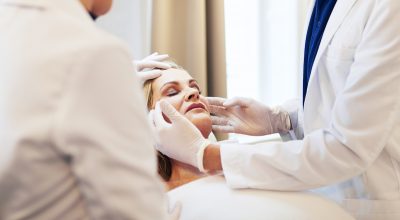 The overall health of the patient and previous medical history are important. Safety is the premiere consideration in dealing with elective cosmetic surgery patients. A working knowledge of their medical condition, both in general as well as specific to facial surgery, must be ascertained.
The overall health of the patient and previous medical history are important. Safety is the premiere consideration in dealing with elective cosmetic surgery patients. A working knowledge of their medical condition, both in general as well as specific to facial surgery, must be ascertained.
After the patients voice their opinions about the desired changes that have brought them to the office, it is the responsibility of the plastic surgeon to organize that picture and relate the observations to specific anatomic circumstances that can be addressed to effect the proposed changes. Patients may ask the surgeon’s opinion of the situation, in which case a broad range of surgical possibilities will be discussed. Other patients know exactly what they want, and planning is direct. In any event, it is the responsibility of the surgeon to explain the possibilities, not sell an operation.
What is a Composite Facelift?
It is important to understand that a facelift is not a canned operation but a selection from a menu of surgical maneuvers meant to correct specific aesthetic problems. Furthermore, the techniques that different surgeons employ vary greatly and should be understood by the patient. The general method that we use, the composite facelift, will be discussed in some detail later on. For now, it is important to remember that specific problems demand specific solutions, and a facelift is tailored to those needs.
Dr. Zubowicz uses a particular technique, called the “composite rhytidectomy” for face-lifting. “Rhytidectomy” is the clinical term for facelift. “Composite” refers to a specific technique which will now be discussed. The evolution of the technique began in the mid-1980’s and is now a well defined operation with predictable results.
Conventional techniques for face-lifting begin by lifting the skin off the cheek and neck. The deeper layers are accessed by this dissection and are available for manipulation. However, much of the blood supply to the skin is supplied by networks of blood vessels within these deeper layers that nourish the skin by small perforating vessels. Lifting the skin requires division of these “perforators” thus compromising the blood supply.
The “composite” technique lifts both the skin and the deeper layers (which will be discussed later) as a unit, preserving both the network of blood vessels in the deeper tissue as well as the perforators. The resulting flap of tissue is maneuvered to reposition sagging areas of fat, muscle, and skin to their more natural youthful position. The skin remains well nourished by attention to the blood supply anatomy.
Many conventional techniques rely on pulling the skin to effect changes in the neck, jowl, and cheek. Remember that the pulling is directed behind and above the ear, a significant distance from the center of the neck and the medial cheek. To sharpen the neck angle and flatten the jowl, a significant amount of tension needs to be generated at the level of support around the ear. This commonly will leave the patient with the appearance of being “pulled too tight.” The patients have an “operated upon” look.
The composite rhytidectomy bases all support for the facelift on a deeper inelastic layer. As stated, the skin remains attached to the deeper connective tissue and muscular layers during dissection. As the flaps of tissue are redraped, the sutures of support are placed through the deeper inelastic layers of connective tissue. The attached skin accompanies these deeper layers in redraping and are not required to support the lift. The skin is closed almost tension free with the most delicate of sutures. As a result, the patients look more natural, the incisions heal better, there is little risk for hair loss, and the lift probably lasts longer.
Request a Facelift Consultation
Dr. Zubowicz is a board-certified plastic surgeon and has been firmly established in the Atlanta medical community for over thirty-five years. He obtained his medical degree from University of Kansas and completed his residency at Emory University Affiliated Hospitals.
He is available for consultations at either the Midtown Atlanta or Milton location. During the consultation, Dr. Zubowicz will discuss your goals, explain his process and determine if you are a good candidate for facelift surgery. Please fill out the form to request a consultation.
Consultation Form
Common Questions About Facelifts
Written and reviewed by:
This article was written by Dr. Vincent Zubowicz, who is board certified by the American Board of Plastic and Reconstructive Surgery. He practices medicine at his offices in Milton and Atlanta. Learn more about Dr. Zubowicz, his medical training, and credentials.
Customer Reviews


Dr. Vincent Zubowicz is one of the Atlanta areas top plastic and reconstructive surgeons. He is an expert in cosmetic surgery, with years of experience performing many plastic surgery procedures. He offers a personal, customized approach and is dedicated to helping patients achieve the most natural looking results.
Call our office at 470-462-2917 to schedule your consultation with Dr. Vincent Zubowicz.




